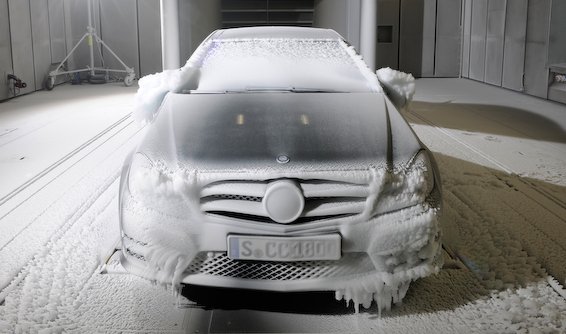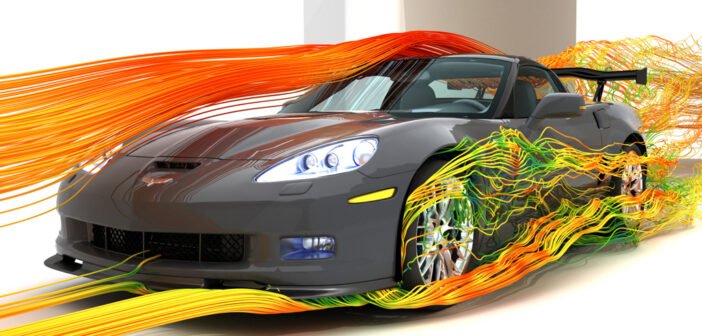Benefits of Preventive Maintenance and Calibration
Maintenance is a process of ensuring that equipment or machinery is in proper and safe working condition. This can be done through regular servicing and repair, or by replacement of defective parts. However, preventive maintenance and calibration are two important aspects of maintenance that are often overlooked. In this article, we'll take a look at the benefits of preventive maintenance and calibration so that you can make an informed decision on whether or not to implement these processes in your business.
What Is Climatic Testing?
Climatic testing is an important process that helps ensure the quality of products. By subjecting products to extreme temperatures, humidity, and other conditions, manufacturers can identify potential issues and make changes to improve the durability of their products. While it may seem like a costly and time-consuming process, climatic testing can save companies money in the long run by reducing warranty claims and product returns.
Improving Aircraft Aerodynamics With CFD Simulation
The use of CFD simulations has allowed engineers to greatly improve the aerodynamics of aircraft. By accurately predicting the flow of air around an aircraft, engineers can make design changes that result in a more efficient and faster airplane. This technology is constantly evolving and improving, and it is likely that we will see even more amazing advances in the future.
What Is Vibration And Noise Control?
Vibration and noise control are important methods of reducing or eliminating unwanted sounds and vibrations. There are many different ways to achieve vibration and noise control, and the most effective approach will vary depending on the specific situation. In some cases, simple measures like increasing the mass of a structure can be enough to dramatically reduce vibration and noise levels. In other cases, more complex methods like active noise cancellation may be necessary. Whatever the approach, it is important to consider both vibration and noise control when trying to create a quiet environment.
Humidity Chamber: What Is It? How Does It Work? Testing Uses?
A humidity chamber, also called a climatic chamber, is an enclosed space in which the temperature and relative humidity can be controlled. These chambers are used to test the effects of different climates on objects or materials. Humidity chambers can be used to simulate a variety of climate conditions, including tropical, desert, and polar climates. They are often used to test the effects of weathering on products or materials. Humidity chambers can also be used to study the growth of mold and mildew.
What Is The Use Of Vibration Testing Equipment?
Vibration testing equipment is used to test the response of materials and structures to vibration. It is an essential tool for engineers to understand the behavior of materials and structures under vibrational loading. Vibration testing equipment can be used to test a wide range of materials, including metals, plastics, composites, and even human tissue.
What Is Calibration?
In order to provide special and innovative products and services in a changing marketplace, manufacturers of all types rely on an accurate measurements. The calibration of devices that measure pressure, speed, flow, elevation, and dozens more are therefore an essential part of the manufacturer's quality system. Understanding calibration can give you an in-depth knowledge of how and why calibration research is important. Calibrating and adjusting your measurement equipment will help you to measure more accurately and without complications. Learn more in this blog post about what calibration is and the benefits it provides!
What’s a Shock Response Spectrum?
Welcome to the blog section for "What's a Shock Response Spectrum?". In this section, we'll provide an introduction to the topic, as well as some definitions of key terms. We hope you find this information helpful in understanding the main article. A shock response spectrum is a graphical representation of how a system responds to a shock. The x-axis represents the amplitude of the shock, while the y-axis represents the resulting response of the system. The response can be in terms of displacement, velocity, or acceleration.
The Benefits Of Using An Accredited Calibration Lab
Unlike laboratories without an accreditation certificate, accredited labs live, breathe and eat maintenance. Through proficiency tests and internal checks, accredited laboratories are continually being assessed to ensure they stay within ISO 17025 standard. It is important to note that not all unaccredited laboratories are equal, therefore not all calibrations are equal. This is why choosing an accredited calibration lab is crucial; it will automatically guarantee accuracy of calibrations.
Do We Need To Calibrate Our Vibration Controller Unit?
Do we need to calibrate our vibration controller unit? In order to answer this, let's try to slightly move backward to remember the role that is played by the vibration controller in a vibration testing system. To run a vibration testing, we need to set our test specification (demand) at the vibration control software and let the vibration controller to control the rest. A feedback sensor will send feedback signal. And based on this feedback signal, vibration controller will adjust the drive signal to make the actual vibration signal aligned with the test specification.
Strain, An Important Aspect of Durability Analysis
Strain gauge can be briefly described as sensor that can measure the strain value (unitless) of structure that is being subjected to specific loading. Strain gauge works based on change of sensor element resistance (resistive based sensor). By using Wheatstone bridge, this resistance change will be converted to voltage and read by data acquisition system.
Various Types of Calibration
Calibration is the comparison of measurement results provided by a device under test with those of a calibration standard of established accuracy in measurement technology and metrology. some of the most frequently performed types of calibration are Pressure Calibration, Temperature Calibration, Flow Calibration, Pipette Calibration, Electrical calibration, and Mechanical calibration.
5 Things to Know About Sine, Random, and Shock
For those new to vibration testing, the vast knowledge on the subject can be overwhelming. Some basic information to get you started can go a long way, which is why we’ve outlined five things you should know about the basic vibration tests: sine, random, and shock.
Efficiently Finding Root Cause of Product Durability Issue
Why the prototype testing stage is critical? What will be the implication if failure occurs during the new product durability testing? In current tight competition in most of industries, such as automotive, aerospace, electronics, etc, the new product development time have been squeezed in order to reduce time to market. The need to launch specific new product exactly at specific timing is considered very crucial. The delay of mass production kick off is not only going to give impact to Sales and Marketing Division, buat also to component supply chain.
Siemens Simcenter Star-CCM+ collaborated with NVIDIA to improve the simulation
Siemens Digital Industries Software has collaborated with NVIDIA to improve computational fluid dynamics (CFD) simulation. Part of the Xcelerator portfolio of software and services, Simcenter STAR-CCM+ 2022.1 software brings CUDA-enabled GPU acceleration to deliver faster turnaround times at lower hardware investment costs to CFD simulation for design and engineering organizations.
Overtone Comparison with ObserVIEW
Instruments produce musical tones through a variety of means. For woodwinds, air is blown into a vibrating column that comprises the body of the instrument. Instrumentalists can adjust the column’s length to adjust the fundamental frequency of the vibration. Guitars, pianos, and string instruments are similar in that they have strings pulled taut between two fixed locations. The string is excited and oscillates in a stable pattern at its fundamental frequency.
Reactive Engineering, Countering Durability Issue at the Later Stage of Product Development
Many industries are still running "trial and error" to find solutions to vibration/durability issues during prototype testing. This option may be taken due to a few reasons. Running a more systematic approach to finding solutions to vibration/durability issues may need some investment in terms of hardware, software, and also infrastructure.
How to overcome the biggest challenge in product development
Major industries such as electronics, automotive, aerospace, aeronautical, railway, and naval have been trying to create breakthrough by shortening their product development lifecyle period. Tight business competition and prototyping cost have been the most common reason why they need to have shorter period of product development.
Effective Battery Testing for Electric Vehicle
Electric vehicles are clearly becoming an expanding part of the automotive scene, assuring low or no emissions, conceivably low cost of fuel from the power grid, yet they will continue to drop us safely from a place to another. However, electric vehicle design and manufacturing is a clear paradigm shift for the Automotive Industry: new technologies, new drive systems and test plans.
Drop Shock Testing for Products and Packaging
Many products will experience shock vibration during shipping and handling or in use. These shocks may be infrequent, such as an accidental drop or repetitive, as with transportation over rough road conditions. Vibration test engineers use shock testing to simulate these conditions in the lab and confirm the structural integrity of the device.



















